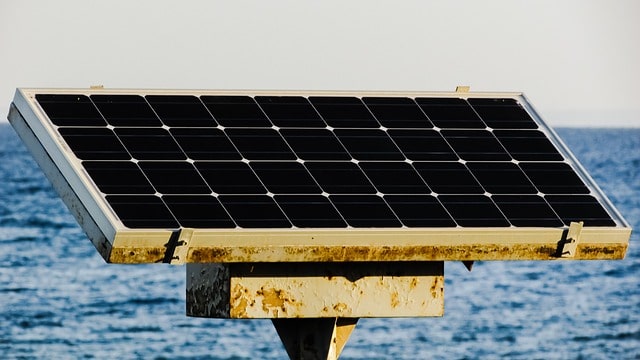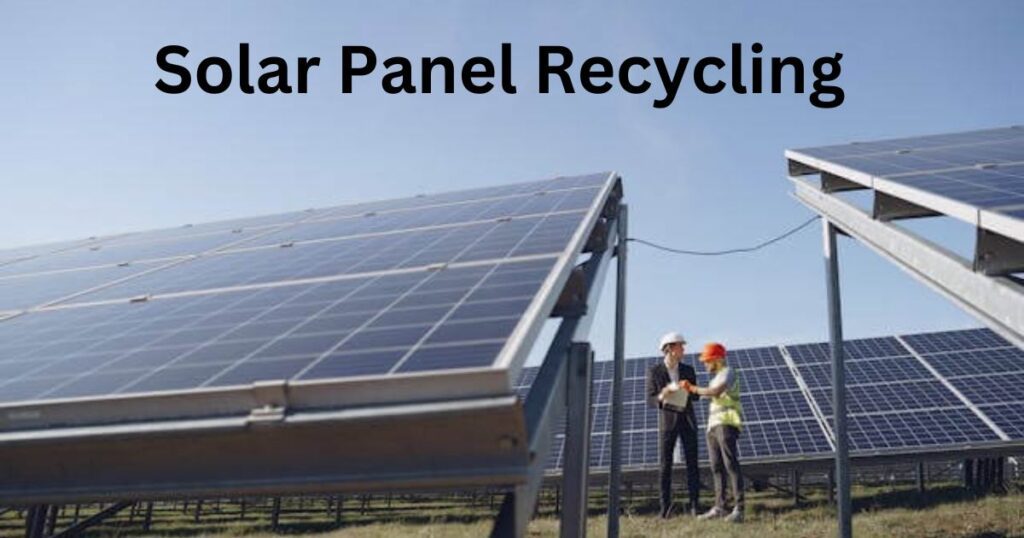Last updated on July 2nd, 2024 at 02:32 am
Solar panel recycling is a critical aspect of sustainable energy management in today’s world. As the adoption of solar energy continues to soar, the need for responsible end-of-life disposal and recycling of solar panels becomes increasingly crucial.
The importance of solar panel recycling lies in its ability to mitigate environmental impacts, conserve valuable resources, and foster a circular economy.
In this article, we will delve into the intricacies of solar panel recycling, providing readers with a comprehensive understanding of the process, its significance, and the promising future it holds for the renewable energy industry.
2. Recycling old solar panels helps mitigate pollution and greenhouse gas emissions associated with improper disposal methods such as landfilling or incineration.
3. Proper end-of-life management through recycling supports the growth of a circular economy by reintroducing materials into the manufacturing process, reducing waste and conserving resources.
4. Recycling solar panels creates economic opportunities by generating jobs, stimulating investment in recycling infrastructure, and fostering innovation in recycling technologies.
Key aspects of the solar panel recycling

Components of the solar PV modules
Solar panels, also known as photovoltaic (PV) modules, consist of several key components that work together to harness sunlight and convert it into electricity:
Silicon Cells: Silicon wafers are the primary building blocks of solar panels. These cells absorb sunlight and generate electrical current through the photovoltaic effect.
Glass: Transparent glass covers the silicon cells, protecting them from external elements while allowing sunlight to pass through efficiently.
Aluminum Frames: Sturdy aluminum frames provide structural support to the solar panel assembly, ensuring durability and resistance to environmental stressors.
Backsheet: The backsheet is a protective layer typically made of polymer materials that shield the solar panel from moisture and humidity.
Junction Box: Located at the back of the solar panel, the junction box contains electrical components that facilitate the connection of individual panels into an array and enable the flow of electricity.
Lifespan of Solar Panels
The lifespan of solar panels generally ranges from 25 to 30 years, although many panels can continue to operate efficiently beyond this timeframe. Several factors influence the degradation and longevity of solar panels, such as exposure to environmental factors, material quality and technological advancements.
Growth Projections of Solar Panel Installations
Challenges in solar panel recycling and disposal
Lack of Standardized Recycling Processes and Infrastructure:
The absence of uniform recycling processes and infrastructure poses a significant challenge to the effective recycling of solar panels. Unlike other industries with well-established recycling systems, the solar panel recycling sector lacks standardized procedures for collection, dismantling, and processing.
This inconsistency complicates recycling efforts, leading to inefficiencies and increased costs. Furthermore, the absence of standardized practices hampers the development of a cohesive recycling industry and inhibits scalability.
Economic Viability and Cost-Effectiveness of Recycling Methods
One of the major challenges facing solar panel recycling is the economic viability and cost-effectiveness of recycling methods. While recycling offers environmental benefits and resource conservation, many recycling technologies remain expensive and may not be economically feasible without subsidies or incentives.
High recycling costs, coupled with relatively low scrap values of some materials recovered from solar panels, present financial barriers to the widespread adoption of recycling practices. Additionally, the lack of economies of scale further exacerbates the economic challenges associated with solar panel recycling.
Environmental Impact of Improper Disposal Practices
Improper disposal practices, such as landfilling and incineration, contribute to environmental degradation and pose significant risks to public health and the ecosystem. Solar panels contain hazardous materials, including lead, cadmium, and various toxic chemicals, which can leach into the environment if not managed properly.
Landfilling of solar panels results in the potential release of harmful substances into the soil and groundwater, posing long-term environmental risks. Incineration of solar panels can also lead to the release of toxic fumes and pollutants into the atmosphere, contributing to air pollution and climate change.
Environmental benefits of solar panel recycling
Reduction of Greenhouse Gas Emissions through Material Recovery and Reuse
Recycling solar panels reduces the need for virgin materials, which in turn reduces the greenhouse gas emissions associated with extracting, processing, and transporting raw materials. By recovering and reusing materials such as silicon, aluminum, and glass from decommissioned panels, the environmental impact of resource extraction is minimized.
Additionally, recycling avoids the energy-intensive processes involved in manufacturing new panels, further reducing carbon emissions. Overall, the lifecycle emissions of solar panels are significantly reduced through recycling, contributing to climate change mitigation efforts.
Conservation of Natural Resources (e.g., Silicon, Aluminum) through Recycling
Solar panel recycling conserves valuable natural resources by recovering materials that can be reused in manufacturing processes. Silicon, a primary component of solar cells, is a finite resource with high energy requirements for extraction and purification.
By recycling silicon cells from old panels, the demand for new silicon production is reduced, preserving natural resources and minimizing environmental degradation associated with mining activities.
Similarly, aluminum frames and other components recovered through recycling reduce the need for new aluminum production, which requires significant energy inputs and contributes to habitat destruction and pollution.
Economic opportunities in solar panel recycling
Job Creation and Growth Potential in the Solar Panel Recycling Industry
The emerging solar panel recycling industry presents significant opportunities for job creation and economic growth. As the demand for renewable energy continues to rise, so does the need for sustainable end-of-life management solutions for solar panels.
Recycling facilities require skilled workers in various roles, including technicians, engineers, logistics specialists, and administrative staff. Moreover, the establishment of recycling infrastructure can stimulate ancillary industries, such as transportation, equipment manufacturing, and research and development.
By investing in workforce development and training programs, governments and private entities can harness the job creation potential of the solar panel recycling sector, fostering economic resilience and prosperity.
Economic Incentives and Policies Supporting Sustainable End-of-Life Management
Governments and regulatory bodies play a crucial role in promoting sustainable end-of-life management practices for solar panels through the implementation of economic incentives and supportive policies.
Financial incentives, such as tax credits, grants, and subsidies, can encourage businesses to invest in recycling infrastructure and technology. Additionally, extended producer responsibility (EPR) schemes shift the financial burden of waste management onto manufacturers, incentivizing them to design products for recyclability and invest in take-back and recycling programs.
By establishing clear regulations and standards for solar panel recycling and offering financial incentives, policymakers can create a conducive environment for sustainable economic growth while mitigating environmental impacts.
Investment Opportunities in Research and Development of Recycling Technologies
The development of innovative recycling technologies presents lucrative investment opportunities in the solar panel recycling sector. Research and development (R&D) initiatives aimed at improving recycling efficiency, reducing costs, and recovering valuable materials offer potential for high returns on investment.
Venture capital firms, private investors, and government agencies can support R&D projects focused on advancements in mechanical and chemical recycling processes, automated sorting technologies, and material recovery techniques. Investing in research and development not only drives technological innovation but also enhances the competitiveness and sustainability of the solar industry.
Moreover, partnerships between academia, industry, and government entities can facilitate knowledge transfer and accelerate the commercialization of breakthrough recycling technologies, creating a thriving ecosystem of innovation and entrepreneurship.
Conclusions
In summary, solar panel recycling offers a dual solution: environmental protection and economic opportunity. By recovering materials from decommissioned panels, we reduce greenhouse gas emissions, conserve resources, and mitigate pollution.
Simultaneously, recycling creates jobs, stimulates economic growth, and attracts investment. To fully realize these benefits, collaboration among stakeholders is essential. By prioritizing and implementing effective recycling practices, we can ensure a sustainable future for solar energy and our planet.

